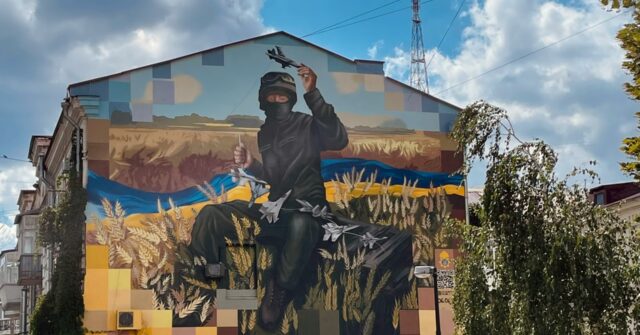On Wednesday, fierce drone exchanges unfolded between Russia and Ukraine amid escalating geopolitical tensions, highlighted by North Korea’s Foreign Minister Choe Son Hui’s visit to Moscow. This meeting was reportedly aimed at reinforcing military cooperation, with North Korea having deployed thousands of soldiers to aid Russia in its ongoing conflict with Ukraine. The new wave of hostilities saw Ukraine’s air force report that Russia launched an aggressive assault involving 62 drones and one missile overnight. Ukrainian defenses were able to intercept 33 drones, and 25 were jammed, but the damage was significant, with strikes impacting a residential building and a kindergarten in Kyiv, resulting in injuries to nine individuals, including a child. Such events underline the continuing brutality of the conflict and the diverse methods of attack employed by Russian forces.
In addition to targeting the capital, Russian air strikes affected various regions across Ukraine, culminating in at least four fatalities and approximately 30 injuries in the last 24 hours. While reports of drone attacks highlighted Russia’s sustained aerial campaign, their ground forces have been actively advancing in eastern Ukraine. The Moscow Defense Ministry claimed the capture of the village of Kruhlyakivka in the Kharkiv region, suggesting a slow but persistent military operation. Concurrently, Ukrainian air defenses successfully downed 25 drones across western and southwestern regions, providing some level of protective measures against the relentless assaults that continue to haunt civilian communities.
The visit of North Korea’s foreign minister to Moscow is especially significant given the context of military assistance. South Korea’s intelligence agency hinted that discussions could revolve around sending further troops to bolster Russian forces. The Pentagon, commenting on the situation, confirmed that North Korea had dispatched approximately 10,000 troops to Russia, with expectations that these soldiers would soon join the fray against Ukrainian forces in the coming weeks. This revelation suggests a deepening military alliance between Moscow and Pyongyang as Russia seeks to augment its military capabilities amidst challenges on the battlefield.
The dynamics of this conflict underscore the shifting alliances and the broader implications for regional stability. North Korea’s involvement could signify an increased level of commitment from its leadership to support Moscow, which has faced significant military setbacks. The reciprocal nature of this relationship is also worth noting; in addition to military support, there is speculation about what concessions North Korea might receive in return for its assistance to Russia. The geopolitical chessboard is thus reshaped, with both nations appearing willing to strengthen their ties in a bid to confront Western influence and support.
Despite the ongoing violence, there are indications that Russia is adapting its strategies. The diversity in drone approaches—attacking from various directions and altitudes—illustrates an effort to overcome Ukrainian defenses. However, such tactics, while temporarily effective, may not ensure long-term success against a resilient Ukrainian military, which continues to demonstrate its capacity for air defense and resistance on multiple fronts. The prospect of continued drone strikes raises concerns for civilian safety and infrastructure, as well as the psychological toll inflicted on the Ukrainian populace.
In summary, the situation remains volatile as drone warfare escalates, reinforced by North Korean military involvement that could shift the balance of power in the conflict. As both Moscow and Kyiv navigate this challenging landscape, the implications extend beyond their borders, impacting regional security and international relations. The enduring nature of warfare, coupled with evolving alliances, emphasizes the complexity of the situation and the urgent need for diplomatic solutions to avert further humanitarian crises. The world watches closely as the battle in Ukraine unfolds, with each day bringing new developments and potential consequences for global stability.

